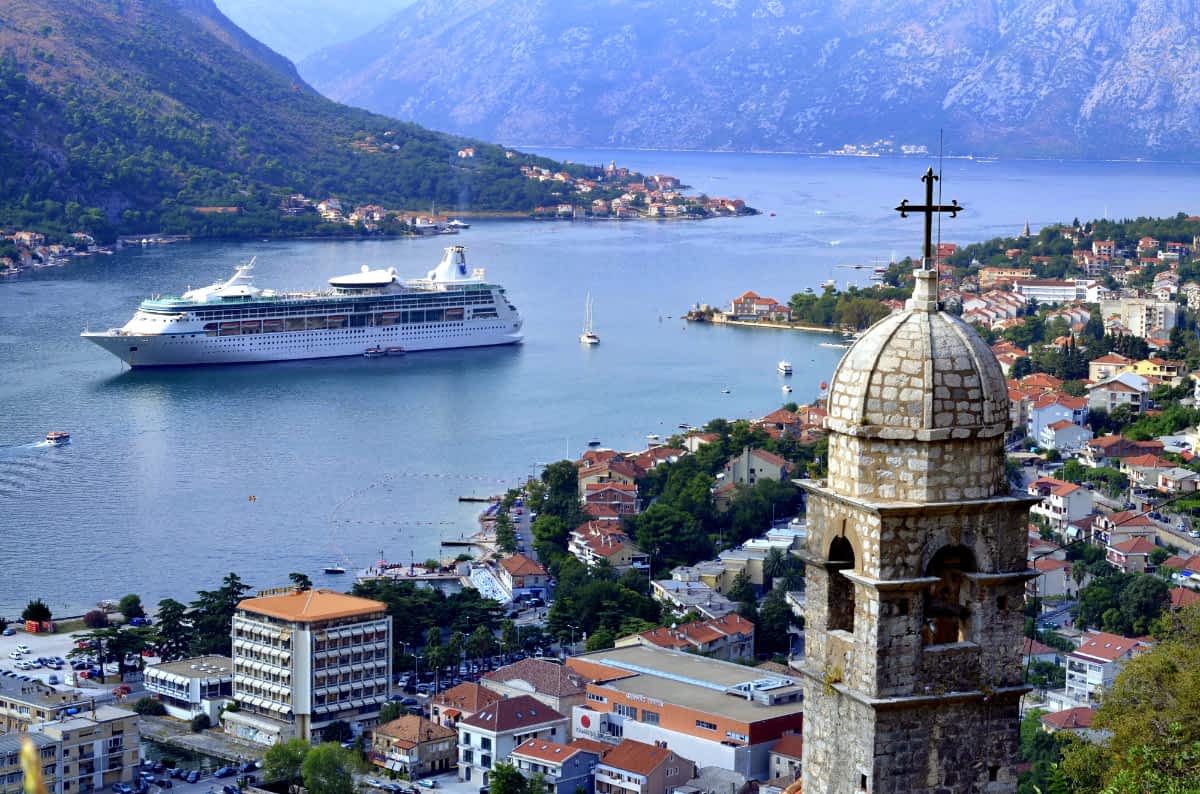Kotor is the most beautiful and best-preserved town in Montenegro. Today, as in the 17th century, Kotor embodies the magical spirit of the Venetian Republic. Venice controlled Kotor from 1420 to 1797 and during this time, the region’s shipping and maritime trade thrived. In fact, the town’s protected location on the innermost Bay of Kotor, or Boka, was instrumental in Venice’s domination of the Adriatic.
Part of Kotor’s addictive appeal for 21st century travelers is that it’s not a town of art museums or major monuments. It’s simply enough to soak up the laid-back Mediterranean atmosphere of this “little Venice on the Boka,” stopping to check out eight of our favorite sites.

Kotor’s Old Town
A UNESCO World Heritage site since 1979, the Old Town of Kotor was built between the 12th and 14th centuries. Wandering through the narrow, romantic streets of this historic gem of a town is a true delight! Every corner hides a story just waiting to be told.
And despite being a major tourist attraction, Kotor hasn’t lost its authentic charm. Locals still meet in town for coffee with friends, and laundry strung between stone buildings is a reminder that this ancient town is a living city. Grab a sugar-dusted cherry strudel from the bakery on the main square to nibble as you wander. You’ll be glad to know that the Old Town is car-free so pedestrians rule the road.

The Fortress of St. John
After exploring the Old Town, it’s time to view these stunning streets from a different perspective. Hiking the walls that zig-zag up the hill to the Fortress of St. John has become a rite of passage for visitors to Kotor. Those who brave the 1,355 steps have certainly earned bragging rights. The hike is three quarters of a mile and it takes around an hour of climbing to get to the top. But it’s worth every step. The spectacular view of the Old Town and Boka Bay is guaranteed to take your breath away!
The Maritime Museum
An old Montenegrin saying goes “When one dips a finger in the sea, one is connected to the whole world.” The sea has always been a way of life for the people of the Bay of Kotor and the Maritime Museum in Kotor is the best place to experience it. Naval instruments, paintings, weapons, model ships and traditional dress fill one of the most comprehensive museums on the Adriatic coast. For a couple of euros you can take an audio tour around the museum, which covers three floors inside an 18th-century palazzo in Kotor’s Old Town.

Cats Museum
The Cats Museum of Kotor is nothing less than a shrine to feline fabulousness. Cats have been a part of Kotor’s history since the first sailor entered the harbor with a ship’s cat on board. Today the town is home to hundreds of stray cats who are looked after and adored by locals and visitors alike.
The museum exhibits period images once belonging to an Italian countess. It also serves as a collection point for wet and dry food donations for the town’s resident cats. And although your own four-legged kitty can’t visit, for just two euros he or she can become official Cats Museum of Kotor members and receive a printable membership certificate. Now that’s something to meow about!

A Trio of Churches
Boka’s oldest cathedral is the Roman Catholic church of St. Triphon, built in 1166. The saint is the protector of Kotor and his relics are kept inside. For a couple of euros you can visit the cathedral. Not to be missed is the upper floor which has a beautiful collection of local dress, weapons and artifacts. The upstairs balcony is also the ideal place to snap a few panoramic pictures of the town.
St. Nicholas is Kotor’s Serbian Orthodox church. An ornate, neo-Byzantine structure built in 1909, it towers over the town. Twin domes and the Serbian flag draping down the facade make it easy to spot. Entrance is free but it’s traditional to buy candles for both living family members and those who have passed away.
Tiny St. Luke’s is dwarfed by the impressive facades of the other two. Sveti Luka, as it’s called in the local language, was built in 1195. This little church is an important symbol of unity for Kotor locals. Transformed from a Catholic church to an Orthodox one in 1657, services for both faiths take place.

A Boat Ride to Our Lady of the Rocks in Perast
Only 15 minutes by boat from Kotor is the miniature stone village of Perast. Once the seafaring capital of this stretch of the Adriatic, the town’s waterfront is lined with elegant palazzos. Wealthy seamen and merchants built them during the 17th and 18th centuries.
But Perast’s top attraction floats offshore, where you’ll find two picturesque island churches. St. George is now a Serb Orthodox monastery and is off limits. Instead, the Catholic church of Our Lady of the Rocks welcomes visitors. Especially on July 22nd for the Fašinada festival.
On this date the people of Perast row in a convoy of boats to drop stones into the sea around the church, symbolically reinforcing it. This annual ritual is followed by a colorful array of Boka sailboats that animates the entire bay.
Kotor, Montenegro combines perfectly with a Croatian vacation since it’s only a 90-minute drive from Dubrovnik. So give us a call at 877-272-2310, or submit a trip request to start planning your Montenegro getaway. You’ll be glad you did!
Have you experienced the allure of Kotor? Share your experiences in the comments below.
